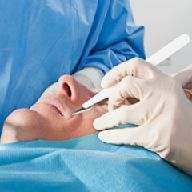Search results
Cast
Episode Guide
- 1. Pilot Mar 30, 2005
- Harlan's nemesis and former employer threatens to undermine the firm.
- 2. Whereabouts Apr 6, 2005
- A former college buddy asks Harlan for help rescuing a kidnapped girlfriend.
- 3. Wings Apr 13, 2005
- Judd Risk Management investigates the theft of a jet prototype.
May 10, 2022 · Your eye is a slightly asymmetrical globe, about an inch in diameter. The front part (what you see in the mirror) includes: Iris: the colored part. Cornea: a clear dome over the iris. Pupil: the...
Other articles from webmd.com
Discover more placesNear Columbus, OH
People also search for
Refine results for Eye Care
- Overview
- The conjunctiva
- The fibrous layer
- The muscles of the lids
- The skin
human eye, in humans, specialized sense organ capable of receiving visual images, which are then carried to the brain.
The conjunctiva lines the lids and then bends back over the surface of the eyeball, constituting an outer covering to the forward part of this and terminating at the transparent region of the eye, the cornea. The portion that lines the lids is called the palpebral portion of the conjunctiva; the portion covering the white of the eyeball is called t...
The fibrous layer, which gives the lid its mechanical stability, is made up of the thick, and relatively rigid, tarsal plates, bordering directly on the palpebral aperture, and the much thinner palpebral fascia, or sheet of connective tissue; the two together are called the septum orbitale. When the lids are closed, the whole opening of the orbit is covered by this septum. Two ligaments, the medial and lateral palpebral ligaments, attached to the orbit and to the septum orbitale, stabilize the position of the lids in relation to the globe. The medial ligament is by far the stronger.
Special offer for students! Check out our special academic rate and excel this spring semester!
Closure of the lids is achieved by contraction of the orbicularis muscle, a single oval sheet of muscle extending from the regions of the forehead and face and surrounding the orbit into the lids. It is divided into orbital and palpebral portions, and it is essentially the palpebral portion, within the lid, that causes lid closure. The palpebral portion passes across the lids from a ligament called the medial palpebral ligament and from the neighbouring bone of the orbit in a series of half ellipses that meet outside the outer corner of the eye, the lateral canthus, to form a band of fibres called the lateral palpebral raphe. Additional parts of the orbicularis have been given separate names—namely, Horner’s muscle and the muscle of Riolan; they come into close relation with the lacrimal apparatus and assist in drainage of the tears. The muscle of Riolan, lying close to the lid margins, contributes to keeping the lids in close apposition. The orbital portion of the orbicularis is not normally concerned with blinking, which may be carried out entirely by the palpebral portion; however, it is concerned with closing the eyes tightly. The skin of the forehead, temple, and cheek is then drawn toward the medial (nose) side of the orbit, and the radiating furrows, formed by this action of the orbital portion, eventually lead to the so-called crow’s feet of elderly persons. It must be appreciated that the two portions can be activated independently; thus, the orbital portion may contract, causing a furrowing of the brows that reduces the amount of light entering from above, while the palpebral portion remains relaxed and allows the eyes to remain open.
Opening of the eye is not just the result of passive relaxation of the orbicularis muscle but also is the effect of the contraction of the levator palpebrae superioris muscle of the upper lid. This muscle takes origin with the extraocular muscles at the apex of the orbit as a narrow tendon and runs forward into the upper lid as a broad tendon, the levator aponeurosis, which is attached to the forward surface of the tarsus and the skin covering the upper lid. Contraction of the muscle causes elevation of the upper eyelid. The nervous connections of this muscle are closely related to those of the extraocular muscle required to elevate the eye, so that when the eye looks upward the upper eyelid tends to move up in unison.
The orbicularis and levator are striated muscles under voluntary control. The lids also contain smooth (involuntary) muscle fibres that are activated by the sympathetic division of the autonomic system and tend to widen the palpebral fissure (the eye opening) by elevation of the upper, and depression of the lower, lid.
In addition to the muscles already described, other facial muscles often cooperate in the act of lid closure or opening. Thus, the corrugator supercilii muscles pull the eyebrows toward the bridge of the nose, making a projecting “roof” over the medial angle of the eye and producing characteristic furrows in the forehead; the roof is used primarily to protect the eye from the glare of the sun. The pyramidalis, or procerus, muscles occupy the bridge of the nose; they arise from the lower portion of the nasal bones and are attached to the skin of the lower part of the forehead on either side of the midline; they pull the skin into transverse furrows. In lid opening, the frontalis muscle, arising high on the forehead, midway between the coronal suture, a seam across the top of the skull, and the orbital margin, is attached to the skin of the eyebrows. Contraction therefore causes the eyebrows to rise and opposes the action of the orbital portion of the orbicularis; the muscle is especially used when one gazes upward. It is also brought into action when vision is rendered difficult either by distance or the absence of sufficient light.
The outermost layer of the lid is the skin, with features not greatly different from skin on the rest of the body, with the possible exception of large pigment cells, which, although found elsewhere, are much more numerous in the skin of the lids. The cells may wander, and it is these movements of the pigment cells that determine the changes in col...
Nov 15, 2023 · Your eyes are light-gathering sensory organs at the front of your head. They send signals that your brain uses to create the “picture” you see.
The human eye is an organ of the sensory nervous system that reacts to visible light and allows the use of visual information for various purposes including seeing things, keeping balance, and maintaining circadian rhythm.
An eye is a sensory organ that allows an organism to perceive visual information. It detects light and converts it into electro-chemical impulses in neurons (neurones). It is part of an organism's visual system .
Sep 16, 2022 · Eye Problems and Diseases. Vision Problems. Get information on common eye and vision problems, such as conjunctivitis, retinal detachment, dry eyes, cataracts, and glaucoma.
Apr 20, 2022 · All the different part of your eyes work together to help you see. Learn the jobs of the cornea, pupil, lens, retina, and optic nerve and how they work together.
People also ask
What is a human eye?
What does eyeball mean?
Why are your eyes so important?
What are the functions of the eye?
Ads
related to: EyesMoisten your lenses and help remove debris that may cause irritation and discomfort. Find a product that’s right for your dry eye symptoms and brings you real dry eye relief
Try Biotrue® Hydration Boost, Naturally Inspired Eye Drops That's Preservative Free. Biotrue® Hydration Boost. Preservative Free Lubricant Eye Drops For Irritated Dry Eyes.











































